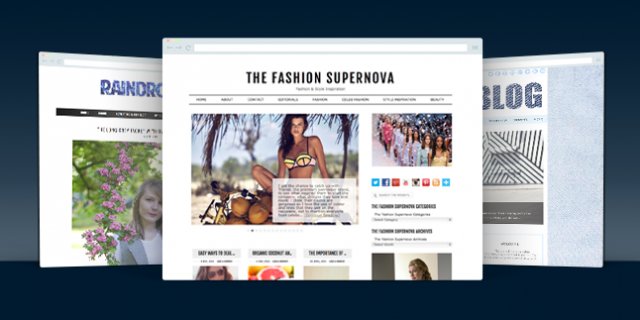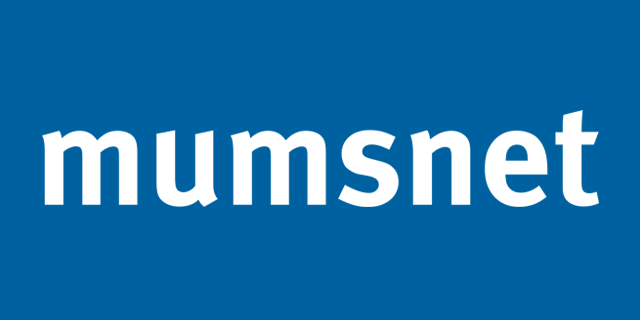How Yahoo Hong Kong scaled affiliate content into a key revenue stream

In our latest case study, we’re lucky enough to sit down with Celina Fan, Head of Lifestyle and Commerce at Yahoo Hong Kong about their commerce content strategy.
Tell me about your commerce content strategy?
At Yahoo, connecting people to their passion is always at our core. Since the launch of Yahoo Hong Kong in 1999, we have been creating that meaningful connection between our audience and what they love through trusted and reliable content.
The long-term approach, building trust and focusing on reliable recommendations are some of the strong success factors of our strategy. We want to help our readers make informed decisions about any product or service they need to buy. To do this, we focus on providing the best shopping inspiration and best prices, as well as always thinking about how we can help our audience save time and money.
Yahoo has reached 93% of Hong Kong’s internet population (No. 1 reach media in HK according to Comscore MMX®) and has established a broad range of soft content channels including lifestyle, food, travel and our gadget specialist brand Engadget Chinese, which are all part of our family. In addition, we’re able to draw on our mail capabilities from electronic direct mail Yahoo Search, web and mobile apps. As such, we can leverage all of those touch points to deliver up-to-date and trending shopping content to help our audience make the best shopping decisions, while also helping our merchants maximise conversions.
Our first objective is to offer useful shopping information to our audience at the right time, in order to create a strong shopping atmosphere for them. This makes them feel comfortable to make purchases based on our recommendations. We want to be their guide throughout their online purchase journey , helping them make their shopping decisions.
2020 fast-tracked us to a new era of commerce. The pandemic altered how consumers shop, transact and pay, with the customer journey moving online. New behaviour became entrenched, especially how consumers are increasingly buying groceries online. With rapidly-evolving consumer habits and technological shifts intersecting, we knew what the next big opportunities and ideas in commerce were shaping up to be like.
When we first launched our commerce business during the initial COVID-19 outbreak, we didn’t really have an extensive coverage of online merchants for all the pandemic supplies people needed. We then drew together all these supplies from merchants around the world to keep people updated daily on availability, so that we could offer people the right information at the right time. Our priority wasn’t only about volume, it was also about building long-term relationships with our readers so they could trust us to provide quality information when they needed it, and so over time we had been able to build up shopping habits and the trust they had in us. That initial pandemic period really set the stage for our ongoing affiliate content development, as we continue to grow and add more categories to recommend such as fashion, gadgets and travel.
Online habits that grew through the pandemic are sticking — there’s no going back to the 2D world, once you’ve gone 3D immersive. Augmented Reality try-before-you-buy shopping and 360 views of products are par for the course, especially for digital natives, brimming with Gen Z shoppers. We at Yahoo believe shopping experiences need to inspire and excite like never before — innovative campaigns, interactive games, immersive content and great deals, all wrapped in a seamless journey from discovery to purchase.
How long have you focused on affiliate marketing?
We started piloting affiliate marketing at the end of 2019 and had some early success. That’s when we realised we could actually leverage our existing content, established soft channels and our whole rounded touch points to drive affiliate commerce business opportunities. From 2020 onwards, affiliate marketing and commerce content have been a part of our consistent strategy for business development, with investment into our resources and coverage for as many categories as possible, slowly building up from there. In the past three years, it has rapidly become a prime and fast growing business unit.
| Key Numbers | Commissions | Order Value | Sales | Traffic |
| YTD-YOY | +87% | +102% | +174% | +50% |
How important was the pandemic as a driver for ecommerce growth?
The pandemic was definitely a facilitator for ecommerce. Hong Kong is a very small place, so in the past when we tried to promote online commerce, we saw that people tend to just go and shop in-store because the retail store is often downstairs from their building. But because of COVID-19, people have changed their behaviour and are more open to buying online. The convenience and cost-savings have become clearer to people.
This has sped up the whole shift to ecommerce, thus educating our users – even those who never bought online before – and turning it into the new norm. Even post-pandemic, people have established their online shopping habits and are comparing prices online before buying. That’s opened up new business opportunities and we see a strong opportunity to grow our affiliate business in the future. We have strong growth momentum here as a business.
What were you looking for in a partner and why did you choose Skimlinks?
Affiliate Marketing is a very sophisticated business, with integrations across various merchants and different platforms, so for Yahoo Hong Kong we needed a partner with reliable data tracking infrastructure and a system to help precisely measure conversions and keep track of all of our performance data. In addition, going back to our focus on trustworthy recommendations and a reliable shopping experience, we wanted a highly responsible partner, with a well-developed affiliate commerce platform and solutions, with strong technical competencies and extensive merchant coverage. Being able to find the right merchants or products to cover was very important for us.
We also wanted to find a partner that could support our fast expansion, with high efficiency and provide strong international brand coverage. So with Skimlinks, we found that extensive global coverage of merchants and an incredibly user-friendly tracking system too. We can generate affiliate links easily, find products our readers need and always find suitable merchants to recommend to our users. There’s also a great variety of merchants available to us through Skimlinks.
So it was a good match for Yahoo Hong Kong to expand our commerce business quickly and easily. We really appreciate how Skimlinks can handle these technical complexities, freeing up our editors to actually just focus on introducing relevant content, select the best products and find fast angles to create user engagement.
How has your strategy developed?
We at Yahoo design experiences to meet peoples’ daily needs, inspiring them throughout the purchase path by weaving premium content with immersive formats powered by unparalleled technology and data. Our end-to-end commerce experiences reach shoppers in key moments of receptivity, positioning your brand to thrive in today’s shopping world.
Our strategy has evolved over the past three years. Initially we did a lot of pilots, A/B tests and different experiments, really aimed at narrowing down best practices and a preferred approach for our audience. Gradually, we’ve been able to build up a formula for success that actually works for our sites, so we can drive exposure and maximize conversions.
We’ve been able to repeat our success again and again, extending it across similar services and products because of our earlier testing. When we think about the practical strategy, our editors work to find a balance between ad hoc discounts, sales, trending products and evergreen articles. We realise that evergreen content brings us continuous conversions through a long period of time, where timely recommendations and ad hoc discounts drive spikes in conversions.
In our latest phase, with our commerce content strategy, we’re working closely with Skimlinks to extend our merchant coverage on more categories and take advantage of missed opportunities available through the Skimlinks network. Our ultimate ambition is to have the broadest range of categories covered, so that our users can access recommendations whenever they want them.
Tell me about your Commerce Team?
I’m the lead of the Lifestyle and Commerce Team, so I manage the team that works across all of our soft content channels, including lifestyle, food, travel, our discounts and offers channel; and we also work closely with Engadget Chinese. The team already has a really strong editorial sense towards these specialised categories and an excellent understanding of our audience, what they like and what they will read.
So as we expand, we leverage that know-how, and continue to convert pure content to shoppable content. We’ve also hired dedicated commerce editors to speed up development of affiliate commerce, cover a broad range of products and services, and gradually these editors are also becoming specialists in the brands, products and verticals they cover. That ensures our readers are always getting the best selection.
On top of this, we’ve also hired data analyst roles to identify opportunities we have from our insights. These research specialists observe search trends and use that to help support development of evergreen content. We also have our Skimlinks Account Manager to support us day in, day out.
For distribution, we have CRM specialist roles that help us optimise open rate and drive conversions. The team has really grown a lot in the past years to cope with the expansion of our affiliate business.
How do you decide which merchants to feature in your articles?
There are quite a lot of factors when we think about Merchant selection. First and foremost, there’s audience preference. We always think about what they will like, and the Hong Kong audience definitely have their own distinct preference. Then we think about product offering and availability, tailoring that to what people need. We’ll find the product at a good price, on a merchant site with an affiliate program, then look at discounts to understand if it’s the best move to buy that product at that time. Lastly, of course, we think about the commission rate and what incentive we have from the brand.
We always focus on the users first and then consider the commercial factors. Our editors will also research and use their expertise to pick between products sold by the same brands. It goes back to their market sense and understanding to contribute to the overall success of the articles. We welcome close partnerships with our merchants and Skimlinks has always facilitated this. Certain brands will offer exclusive campaigns, or a certain commission uplift in different periods. Specific discount codes for our audience are a really nice additional incentive, and we’re keen for more unique offers for our audience in the future.
What role does data play in your content creation?
We rely heavily on data in making day-to-day business decisions. One of the advantages of online commerce is that we can keep a track of all the data and conversions in a timely manner. We assess our key performance indicators on a regular basis to drive creation of better performing content.
As we run different tests, we’re able to personalise content, and learn which angles or key focuses our users are looking for. We can leverage our prior experience to optimise, too.
Skimlinks provides a good spectrum and coverage of data. We can see what products people bought from brands and the links people clicked through to interact with merchant sites. On top of that, we can add our proprietary data including page views and user engagement to identify what best practice would be for us.
Lastly, Singles’ Day and the peak season are coming up. What do you have planned?
Q4 is the most important season for the commerce business, and 11/11 is the first wave of the mega sales, followed by Black Friday, Cyber Monday and Christmas through to the year end.
We’ll have gift guides, shopping guides, best buy items, flash sales , listicles and also our editors’ recommendations across favorite brands and product categories targeted for our audience. For each major event, we’ll run articles from shortly beforehand until all the way afterwards. We see our mission as helping our audience get what they need for the best price during the mega sale season, and to help them get the right gifts before each special occasion.
We plan to have extensive coverage of 11/11, with a shopping page for each big event to consolidate our recommendations into one place. There’s also a distribution plan to make use of the whole Yahoo Hong Kong network. One advantage for us being more than a media company is we have lots of touch points and capabilities to use for wide distribution: email, search, mobile apps etc. We know the best spots to surface content on the homepage, and the best times to post articles. Doing all of this helps create a strong Christmas shopping atmosphere on site and encourage people to treat themselves, too.








